UW–Madison’s agricultural research stations help Wisconsin farmers stay on leading edge
For an enhanced multi-media experience, read this story at https://news.wisc.edu/growing-the-future/.
Rodrigo Werle wonders if anybody is ever happy to see him. He is, after all, a weed scientist specializing in the most unwelcome guests that pop up in Wisconsin farm fields.
“Nobody wants to be in the same field where I do research,” says Werle, an associate professor and extension specialist in the University of Wisconsin–Madison’s Department of Plant and Agroecosystem Sciences. “I want to work where there’s giant ragweed and waterhemp and all the hardest-to-control weeds we have.”
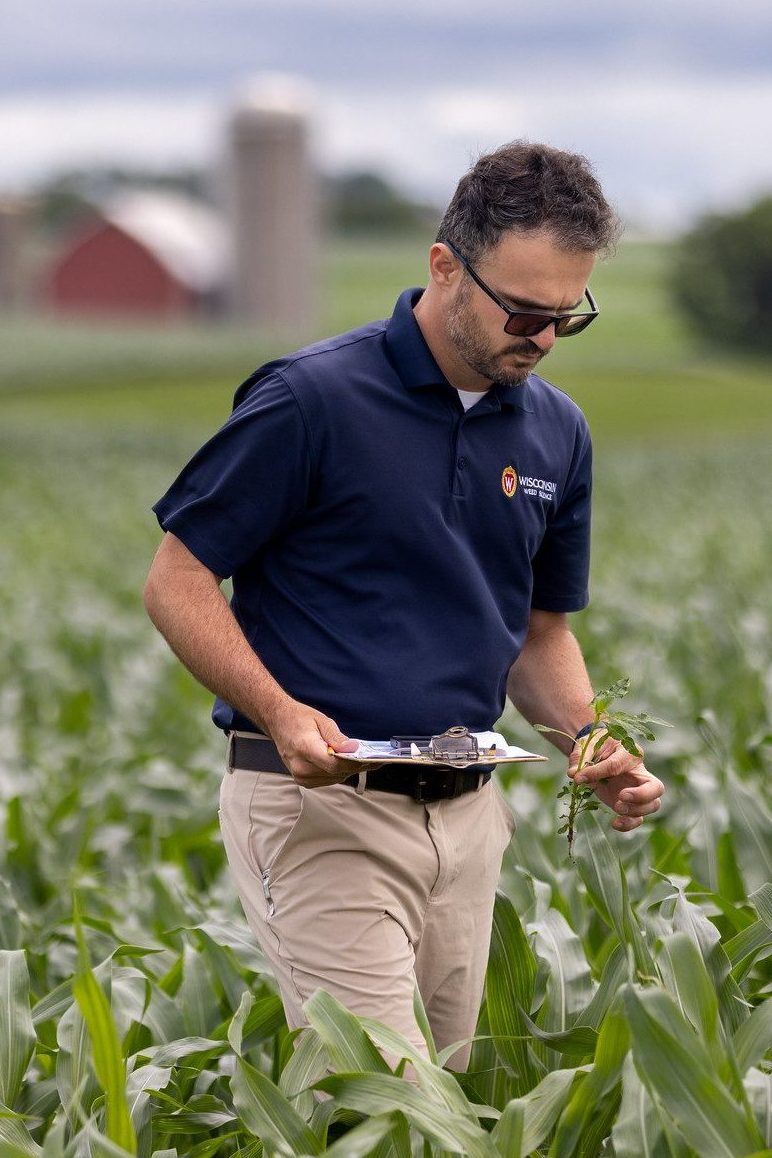
So, when he first laid eyes on UW–Madison’s Arlington Agricultural Research Station during his 2017 job interview, he began imagining all kinds of research possibilities. Arlington is one of UW–Madison’s 12 Agricultural Research Stations dotting the state, 10 of which are both working farms and working laboratories. The goal of these stations is to develop useful recommendations for farmers.
Testing new ideas is labor-intensive for farmers who are trying to keep their operations profitable. It requires a commitment of acreage and time. And it demands a willingness to accept the prospect of failure. That’s a lot to pile on top of market swings, weather extremes and razor-thin margins.
“Our farmers are great partners, but maintaining complex, long-term studies, year after year on their farms would be very difficult,” says Werle. “We can do those studies at our research stations reflecting the soil and practices of the stakeholders in the region, in fields they can walk into to see the results for themselves.”
That was the goal from the start, says Mike Peters, when what would become UW–Madison’s College of Agricultural and Life Sciences began establishing research outposts more than a century ago in places like Marshfield, Sturgeon Bay and Spooner.
“Wisconsin is very diverse when you think of all the soil types and agricultural commodities grown in different parts of the state,” says Peters, director of the Agricultural Research Stations. “We do great work at Arlington, but it sits on 24 inches of beautiful topsoil. What works in that environment is not going to be convincing to someone near Spooner, trying to farm the sandy loam soil there.”
One thing the stations have in common is the way they’ve drawn talented scientists from around the country and the world to work shoulder-to-shoulder with Wisconsin farmers to solve specific problems and keep them competitive in global markets.
Lancaster Agricultural Research Station, Grant County
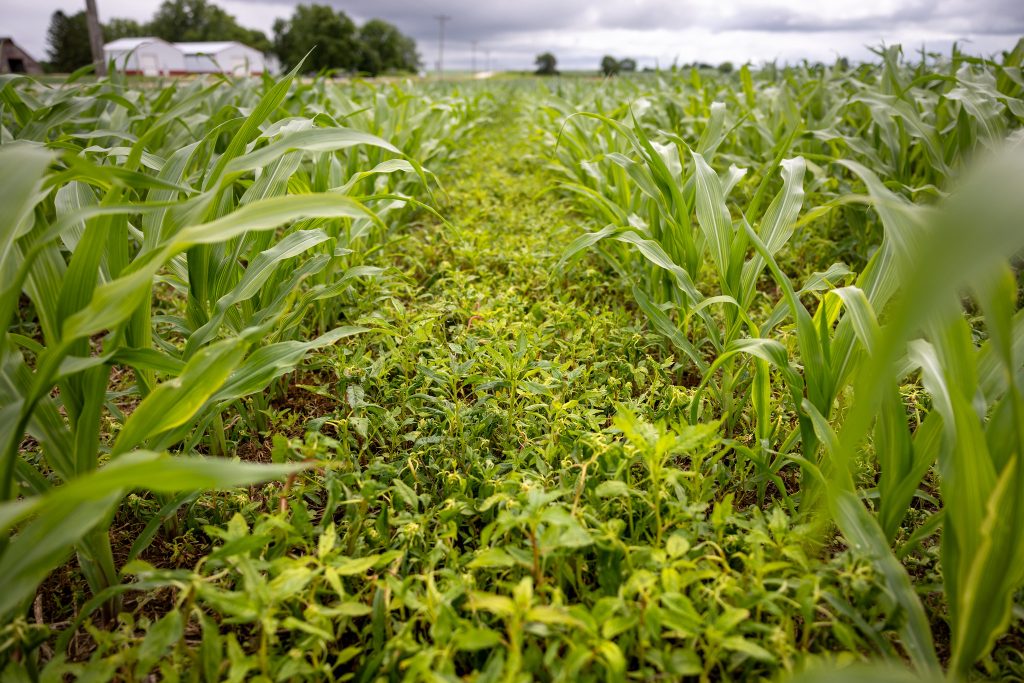
Waterhemp is a stubborn type of pigweed that crowds out and robs nutrients from corn and soybeans. It has a particular knack for outfoxing the chemicals designed to kill it — developing resistance to herbicides almost as fast as they can be approved for use. Five or six years ago, 10% of the waterhemp Werle encountered was resistant to some of the herbicides commonly used for weed control in corn and soybean fields; in 2023, it was already up to 50%.
“Relying on chemistry alone is not sustainable because of that speed,” Werle says.
That’s where Werle and Daniel Smith, a crops and soils program manager in the UW Division of Extension, come in. Since 2018, corn and soybean fields at the Lancaster Agricultural Research Station in southwestern Wisconsin have been home to an experiment comparing different weed management practices side by side, from the most conventional tilled soil sprayed repeatedly with herbicides to no-till plots that cut back deeply on spraying in favor of cover crops — in this case, a winter hardy grain called winter rye that can be planted in fall after corn or soybeans are harvested.
The differences are stark. The tilled rows, where the soil has been turned over each year, sit noticeably lower, the soil washed away forever without plant roots to retain it. And there’s waterhemp. Even after fresh applications of herbicide, many of the weeds are hanging on with little damage.
In contrast are the rows where Werle and Smith have let the winter rye grow right up to the moment farmers “plant green” — planting rows of corn directly into the still-thriving cover crop. Then they kill off the rye with a single application of an herbicide, which doesn’t bother the corn. Organic farmers could use a roller crimper machine to kill the rye without an herbicide.
“Where we’ve grown winter rye as a cover crop, you can see that there’s hardly any weeds,” says Smith.
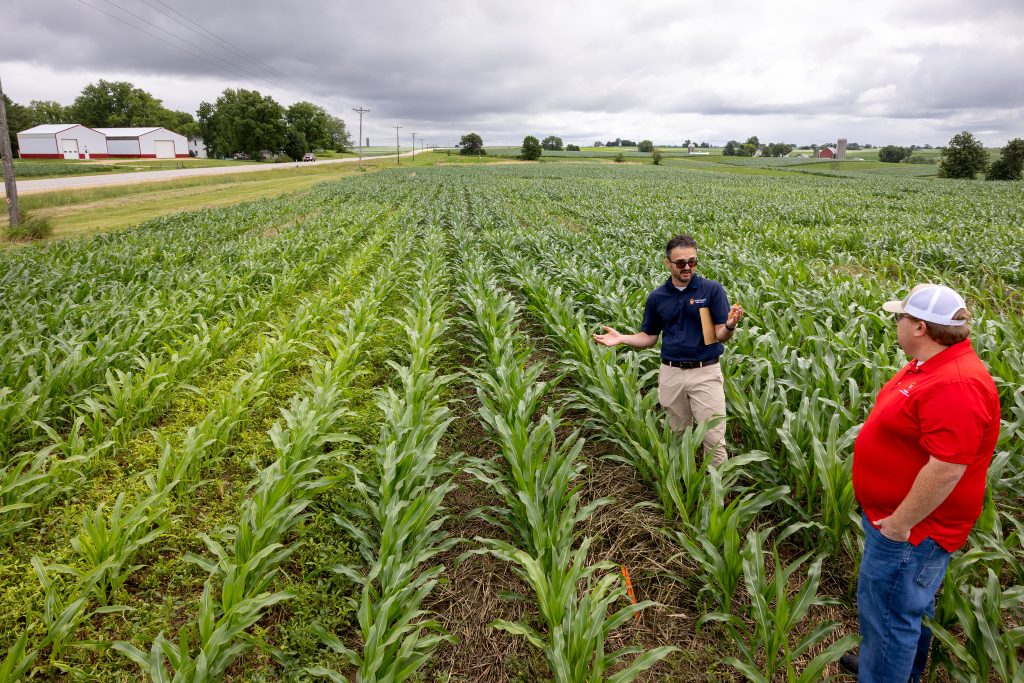
That’s because what’s left of the cover crop becomes biomass, which acts like a mulch on top of the soil, reducing erosion and keeping the surface at a more consistent temperature.
“The mulch buffers temperature fluctuations and tricks the weed seeds into not germinating,” Werle says. “It’s fascinating.”
And it’s effective. With just one herbicide application to “terminate” the rye cover crop — more time- and cost-effective for farmers than repeated spraying — Werle and Smith are seeing little to no waterhemp develop, compared to the lasting problems in conventionally tilled corn plots that get repeated herbicide applications. The approach is even more successful in soybeans. And, by reducing herbicide use on the waterhemp, farmers give the weed fewer chances to develop resistance to the chemicals.
Hundreds of farmers have seen the results during open house-style “field days” at research stations where Werle, Smith and other researchers can quite literally walk them through the experiments. It’s a chance for crowds of growers to step through rows of cover crop examples, herbicide trials, new technology demonstrations and, for experienced farmers like Jake Kaderly, to pepper Werle with questions.
“In the old days, herbicides worked on everything,” says Kaderly, who farms near Juda, Wisconsin, and works as an agronomist advising other farmers. “But nature adapts and overcomes, so we need to find ways to stay ahead.”
His clients, though, are often reluctant to shift away from practices they’ve grown comfortable with, even as those practices become less successful.
“It’s not easy to talk about these things if it’s not the way their farm’s been working for years,” Kaderly says. “You’re not going to consider a change if it feels like a risk. Well, in Rodrigo’s research fields, you can see it working. You see the proof.”
Arlington Agricultural Research Station, Columbia County
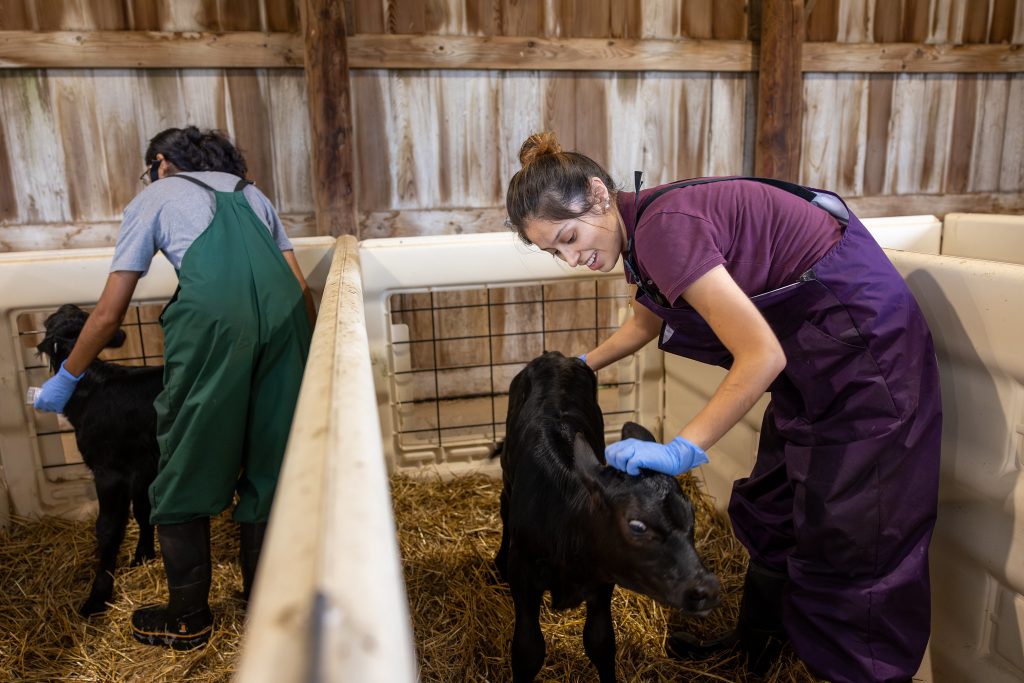
In Arlington, Wisconsin, only about 20 miles north of campus, Lautaro Rostoll-Cangiano, a UW–Madison assistant professor of animal and dairy sciences, is studying how differences in diet and environment affect the development of immune systems in dairy and beef cattle.
To keep producing milk, dairy cows need to give birth to new calves every year. For decades, farmers focused on using calves to replace milking cows and improve their productivity over time. But Heather White, a UW–Madison animal and dairy sciences professor who studies cow nutrition, says breeding has become so successful that farmers no longer need so many replacement calves to achieve those goals.
“But we still need to have calves for milk production, so the farmers went looking for other opportunities,” she adds.
Between record high beef prices and some of the smallest cattle herd numbers in decades, dairy farmers have found the new and lucrative solution of breeding some of their less-productive milking animals — as much as half their herd in some cases — with meat-producing breeds like Angus cattle. Those crossbred calves, called “beef x dairy” or “beef-on-dairy” crosses, are sold for or raised as beef cattle. But the farmers are straying into relatively unknown territory.
“Right now, more and more farmers are breeding their dairy cows with beef cattle, but we don’t know much about the best ways to raise those calves,” says Rostoll-Cangiano.
Long-time nutritional research has led to optimized diets that look very different depending on a cow’s future “career” as a meat or milk producer. But, what to do with beef-on-dairy crosses? Should they eat what a dairy calf eats or what a beef calf eats? Or should they have a hybrid diet?
“The farmers have a lot of questions on how to raise these animals, how to feed these animals,” says Rostoll-Cangiano. “We want to know how to use that diet to best program their immune system to keep them healthy.”
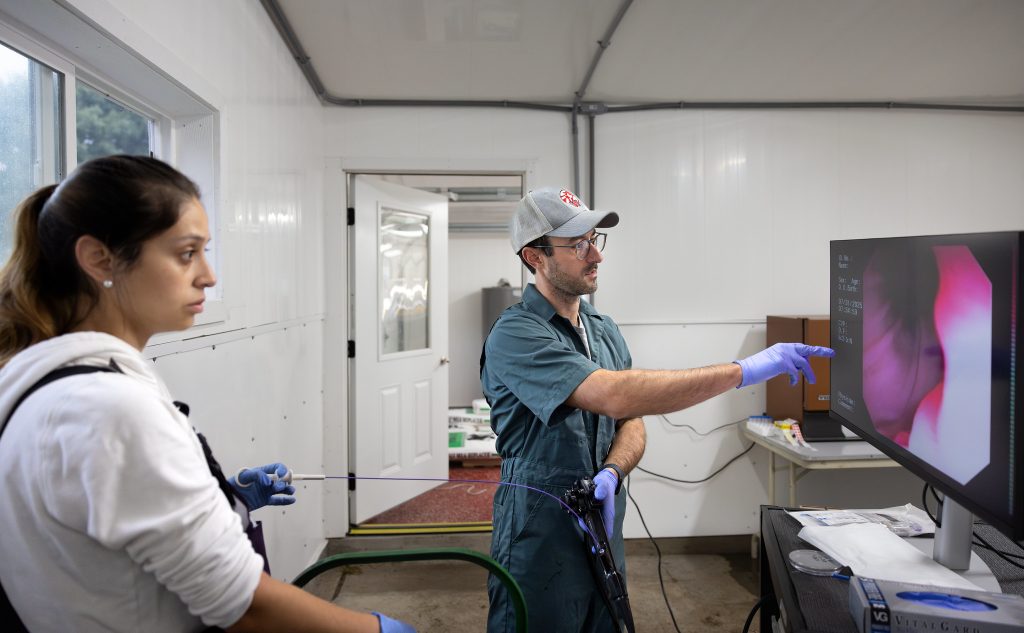
His lab is studying a group of new beef-on-dairy calves, trying out a diet that includes beneficial microbes, called probiotics, to see how they affect microbial communities in the calves’ guts and shape their immune systems.
“It’s interesting to work in the lab, where the results tell us what’s going on,” says graduate student Martina Mancheno, who comes to the station to collect tissues samples for the study but analyzes them back on campus. “But I like to come out here and work on the farm more, to be with the animals.”
That, Rostoll-Cangiano says, is what makes Arlington — with its large herd of cows and centers for sheep and pigs and plant and soil science, to boot — an invaluable resource.
“We have tremendous facilities,” he says. “We may be the only university in the country that has this kind of access to animals and also the staff that understand both a research facility and a farm environment in a way that makes our research as useful as it can be.”
Hancock Agricultural Research Station, Waushara County
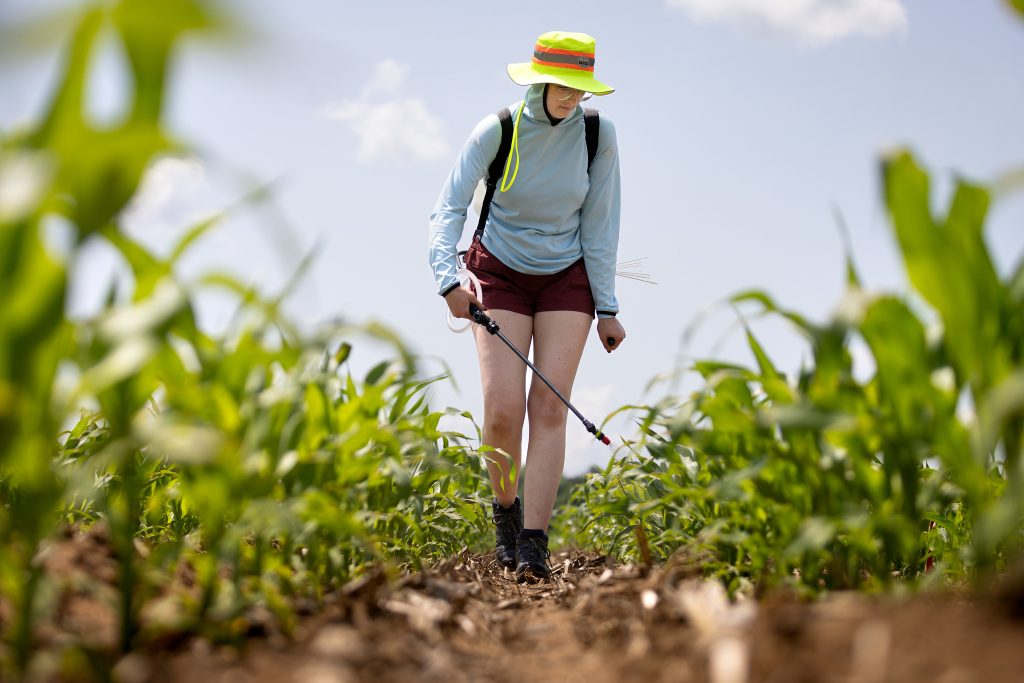
Located in Wisconsin’s aptly named Central Sands region, Hancock Agricultural Research Station might just usher in a new era for corn growers in Wisconsin and around the world.
As one might guess, ample watering is necessary in these sandy fields, which drain like a bathtub with the plug pulled — rinsing away most of the nutrients plants want, including all of the nitrogen. As it happens, that’s exactly what Jean-Michel Ané, a professor in UW–Madison’s plant and agroecosystem sciences and bacteriology departments, was looking for.
“We’re so lucky to have Hancock station,” says Ané, whose work is supported by the U.S. Department of Agriculture. “It’s actually very unique in the United States, and perfect for field trials of our corn hybrids.”
To fully grasp the significance of these hybrids, it’s important to know what it takes to grow corn. It takes nitrogen — a lot of it.
The sheer volume of synthetic nitrogen fertilizer needed to grow corn is a substantial hit on a farmer’s pocketbook but also has broader implications for local groundwater contamination and global energy production.
For more than a decade, Ané has been studying varieties of corn from Oaxaca, Mexico, that have found a source of nitrogen that would make a stage magician proud: They pull it right out of the air.
“The corn from Mexico has this relationship with nitrogen-fixing bacteria that is very happy living in a gel produced by bundles of roots that grow out from the stalks into the air,” says Ané. “They can get as much as 80% of their nitrogen from the air through bacterial colonies that live on their roots.”
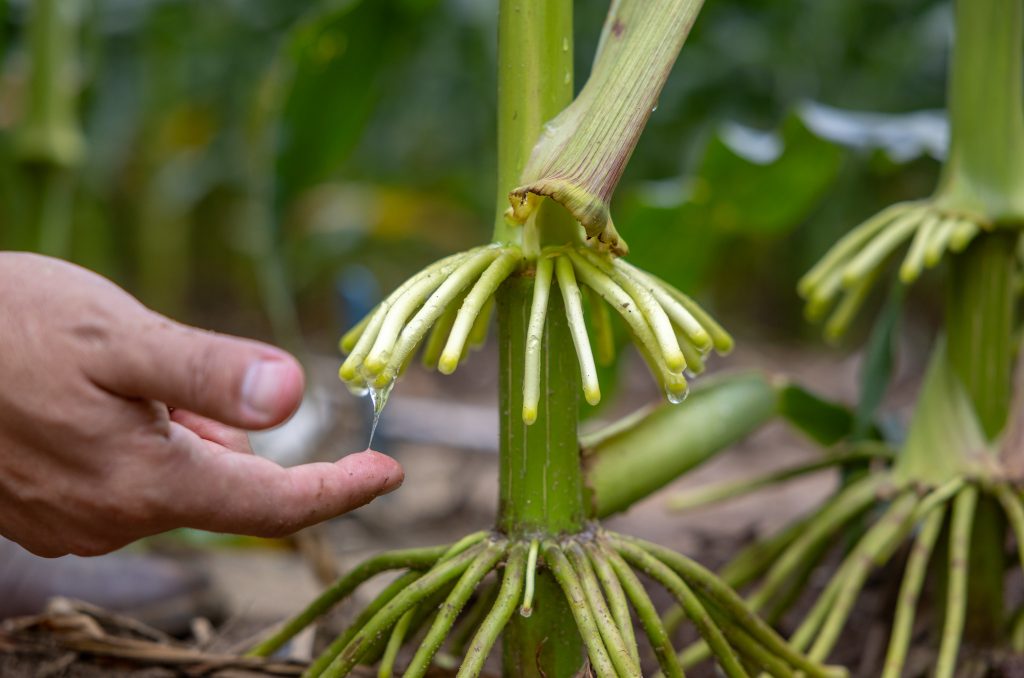
Ané’s lab wants to breed a new type of corn that keeps this amazing nitrogen-fixing ability intact, resulting in plants that do what Wisconsin farmers want them to do without the need for so much nitrogen fertilizer. The inability of Central Sands soil to retain water and nutrients makes it the perfect testing ground for this corn because it starts each season devoid of nitrogen.
“That gives us a very useful baseline to work from in our experiments,” says Rubens Diogo Jr., a postdoctoral researcher in Ané’s lab. “We know if we don’t put nitrogen into a field like a typical farm would, the plants in that field aren’t getting nitrogen left over from past years.”
On a few hot days in the early summer, Diogo’s crew of undergraduate students walked the rows of hybrid corn, spraying the plants with a slurry that includes strains of nitrogen-fixing bacteria grown in Ané’s lab. About half the plants of each hybrid corn variety get fertilized like a typical Wisconsin corn field. The other half goes without.
The scale of the experiment – 152 hybrids, 1,400 plots and more than 200,000 total corn plants — is staggering. And results so far are promising. Last year, some of the crosses that received no nitrogen fertilizer applications produced the same yield as plants that got all the fertilizer they would on a typical farm.
In late July, crunching through a sandy Hancock field between tall stalks of corn, Diogo points out rows of experimental hybrids that look promising — with clumps of chubby roots reaching out into the air maybe 10 inches off the ground — and rows that look like duds, sporting few or no air roots and withering leaves.
In a couple more months, these plants will be harvested and analyzed for key production measures, such as height, flowering times and grain quantity. That data will help them answer the most common question they get from the Wisconsin farmers who have seen the plants and heard Diogo and Ané describe their promising results.
“They want to know about applying the bacteria and yield and things like that,” Diogo says. “But they get excited and really they have one question for us: When will I be able to plant these plants?”
Growing the future
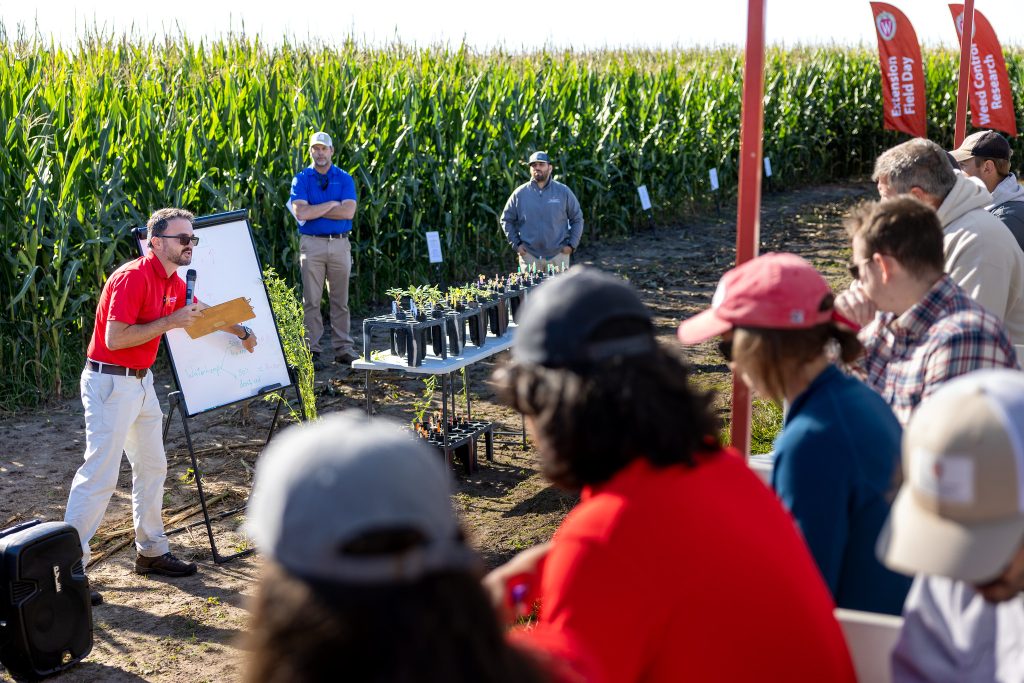
The future is where the farmers are looking when they turn to the UW–Madison scientists and staff working at the research stations. It could be a generation in the future. Or next year. Or later that afternoon, as they speed-dial Rodrigo Werle while standing over a stubborn patch of weeds.
“It’s a great team, with Extension and a group like this,” Charles Hammer says of the researchers. “They have ideas. We have ideas. We’re coming together to compare notes as we go.”
Hammer, with a partner, farms about 1,800 acres in Dodge County. To stay on the leading edge and make his farm as successful as possible, he takes every opportunity to pick scientists’ brains and walk the station fields where they’ve done their work.
“To have a group like this, people that are very forward, always looking in the future, is very valuable,” Hammer says.
That makes looking after the future of the Agricultural Research Stations important, too.
Mike Peters can rattle off a seemingly endless list of projects around the network of stations tracking diseases like potato blight, publishing reports on new varieties of crops, working on drought-hardy turfgrass and more.
“UW faculty are charged with solving the next generation’s problems,” Peters says. “All the producers in the state of Wisconsin, regardless of agricultural commodity, rely on UW–Madison for information to help them succeed. We want to be forward-thinking for those people. With support, we can make investments in technologies and equipment and facilities that address emerging problems and emerging crops, and supply new ideas for Wisconsin to grow.”
The UW–Madison’s Agricultural Research Station network is supported by the university and through state and federal funding. Individual on-station research projects are funded by a variety of sources, including the U.S. Department of Agriculture, National Science Foundation, U.S. Department of Energy, National Aeronautics and Space Administration, Wisconsin Department of Natural Resources, agricultural commodity groups, private industry and other sources.
RESOURCES FOR MEDIA
This story was originally posted on the UW–Madison news site at: https://news.wisc.edu/growing-the-future/
Contact: Michael P. King, michael.p.king@wisc.edu
Photos available at: https://www.flickr.com/gp/uwmadisoncals/fY87q1T9Pm

